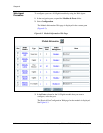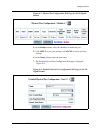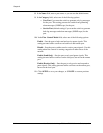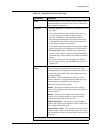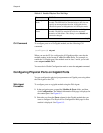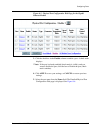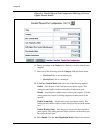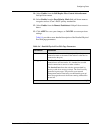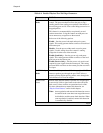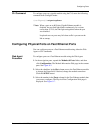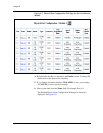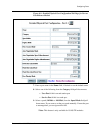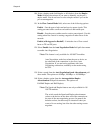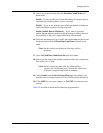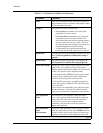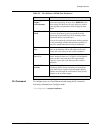
8-20 User Guide for the Avaya P580 and P882 Multiservice Switches, v6.1
Chapter 8
Flow Control
Mode
This field determines if the port uses IEEE 802.3z pause
control. The pause mechanism allows the port to stop a
sending station from sending more packets if the buffers of
the receiving port are full. Flow control helps prevent lost or
dropped packets.
This feature is recommended for use primarily on end
station connections. Using this feature on trunk ports can
cause unnecessary congestion on the network.
Select one of the following options:
Enable – Sets the port to both send and receive pause
signals. This setting prevents buffer overflows on both local
and remote port.
Disable – Sets the port to neither send or receive pause
signals. Use this setting when flow control is causing
congestion in other areas of the network.
Enable (Send Only) – Sets the port to only send pause
signals. This setting prevents buffer overflows on the local
port, but not on the remote port.
Enable (Receive Only) – Sets the port to only receive and
respond to pause signals from the remote port. This setting
prevents buffer overflows on the remote port, but not on the
local port
PACE Priority
Mode
Determines if the port detects 3Com’s copyrighted PACE
format as packets pass through the port. PACE allows a
packet’s priority (higher priority packets move through the
switch faster) to be set at the adapter.
Remote Fault
Detect
Remote fault detection makes it possible for a Gigabit port
at one end of a link to signal status to the other end of the
link, even if it does not have an operational receive link.
For more information on remote fault detection, see
“Physical Port Features” earlier in this chapter.
Note: Auto-negotiation and remote fault detection can not
be enabled at the same time.Auto-negotiation must
be disabled to enable remote fault detection. When
auto-negotiation is enabled, remote fault detection
is automatically disabled.
Table 8-4. Detailed Physical Port Web Page Parameters
Parameter Definition
2 of 2



